| Rye %: | 100% |
| Stages: | Straight dough |
| Leaven: | Instant yeast |
| Start to Finish: | 4 hours |
| Hands-on Time: | 20 minutes |
| Yield: | Two dozen 1¼ oz./35 g rusks |
Someone recently asked me if I had a good recipe for rye rusks and this one immediately came to mind. Rusks – that is, bread that’s purposely dried for long storage – are not common in the US: biscotti and zwieback perhaps come closest. In northern Europe especially, however, they’re far more common.
This recipe comes from the central Finnish region historically known as Tavastia (Hämä in Finnish), and was a bread traditionally baked and eaten at the talvennapa – a pagan feast that took place in mid-January to mark the end of the joulu (Christmas) observance and to welcome the sun, Pälvätär, back into the sky after the long, dark days of midwinter.
The rusks themselves, although austere in form, are rich and festive in flavor. An abundance of butter, milk and syrup make for a rich, sweet chew which plays beautifully against the spicy rye and astringent caraway. The crumb is close and even, and provides a satisfying crunch with every bite.
These breads go well with pretty much everything, from sweet toppings like preserves and honey, to savories like strong cheeses and cured meats.
Final Dough:
| Ingredient |
Grams |
Ounces |
Baker’s |
| Whole milk |
370 |
13.05 |
89.20% |
| Unsalted butter, at room temperature (70°F/21°C) |
123 |
4.35 |
29.65% |
| Unsulphured molasses, dark corn syrup or malt syrup |
90 |
3.15 |
21.70% |
| Wholegrain rye flour |
415 |
14.65 |
100.00% |
| Salt |
10 |
0.35 |
2.41% |
| Instant yeast |
12 |
0.45 |
2.94% |
| Caraway seed |
10 |
0.35 |
2.41% |
| TOTAL FORMULA |
1,030 |
36.35 |
248.31% |
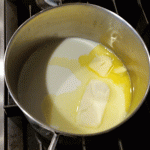 In the mixer bowl warm the milk over low heat to 105-110°F/41-43°C, add the butter and stir until melted, and add the molasses and stir to dissolve.
In the mixer bowl warm the milk over low heat to 105-110°F/41-43°C, add the butter and stir until melted, and add the molasses and stir to dissolve.
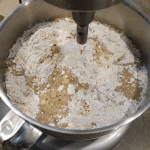 Add the flour, salt, instant yeast and caraway seed.
Add the flour, salt, instant yeast and caraway seed.
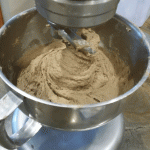 Use the dough hook to mix at low (KA2) speed, scraping down the sides of the bowl as needed, until the dough comes together into a soft and sticky mass that climbs up the dough hook, 6-8 minutes.
Use the dough hook to mix at low (KA2) speed, scraping down the sides of the bowl as needed, until the dough comes together into a soft and sticky mass that climbs up the dough hook, 6-8 minutes.
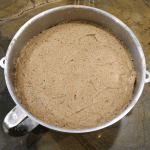 Cover the mixer bowl with plastic wrap and ferment at room temperature until the dough has doubled in volume and shows cracks and broken bubbles, about 2 hours.
Cover the mixer bowl with plastic wrap and ferment at room temperature until the dough has doubled in volume and shows cracks and broken bubbles, about 2 hours.
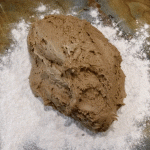 Turn the dough, which will have firmed up and become easier to handle, onto a well-floured work surface. Use floured hands to knead it back to its original volume and divide into twelve pieces weighing about 3oz./85 g.
Turn the dough, which will have firmed up and become easier to handle, onto a well-floured work surface. Use floured hands to knead it back to its original volume and divide into twelve pieces weighing about 3oz./85 g.
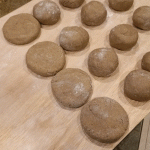 Use floured hands to shape each piece of dough into a ball, then flatten it into a round and place it onto a floured peel, if using a baking stone, or a parchment-lined sheet pan.
Use floured hands to shape each piece of dough into a ball, then flatten it into a round and place it onto a floured peel, if using a baking stone, or a parchment-lined sheet pan.
Preheat the oven to 450°F/225°C with the baking surface in the upper third. Place the unproofed dough rounds into the oven and bake until firm, 10-12 minutes.
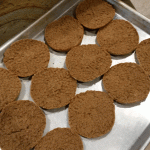 Reduce the oven temperature to 220°F/105°C. Fork split the breads, return them to the oven and bake until completely dry, 45-50 minutes.
Reduce the oven temperature to 220°F/105°C. Fork split the breads, return them to the oven and bake until completely dry, 45-50 minutes.
Cool thoroughly and store in an airtight container.

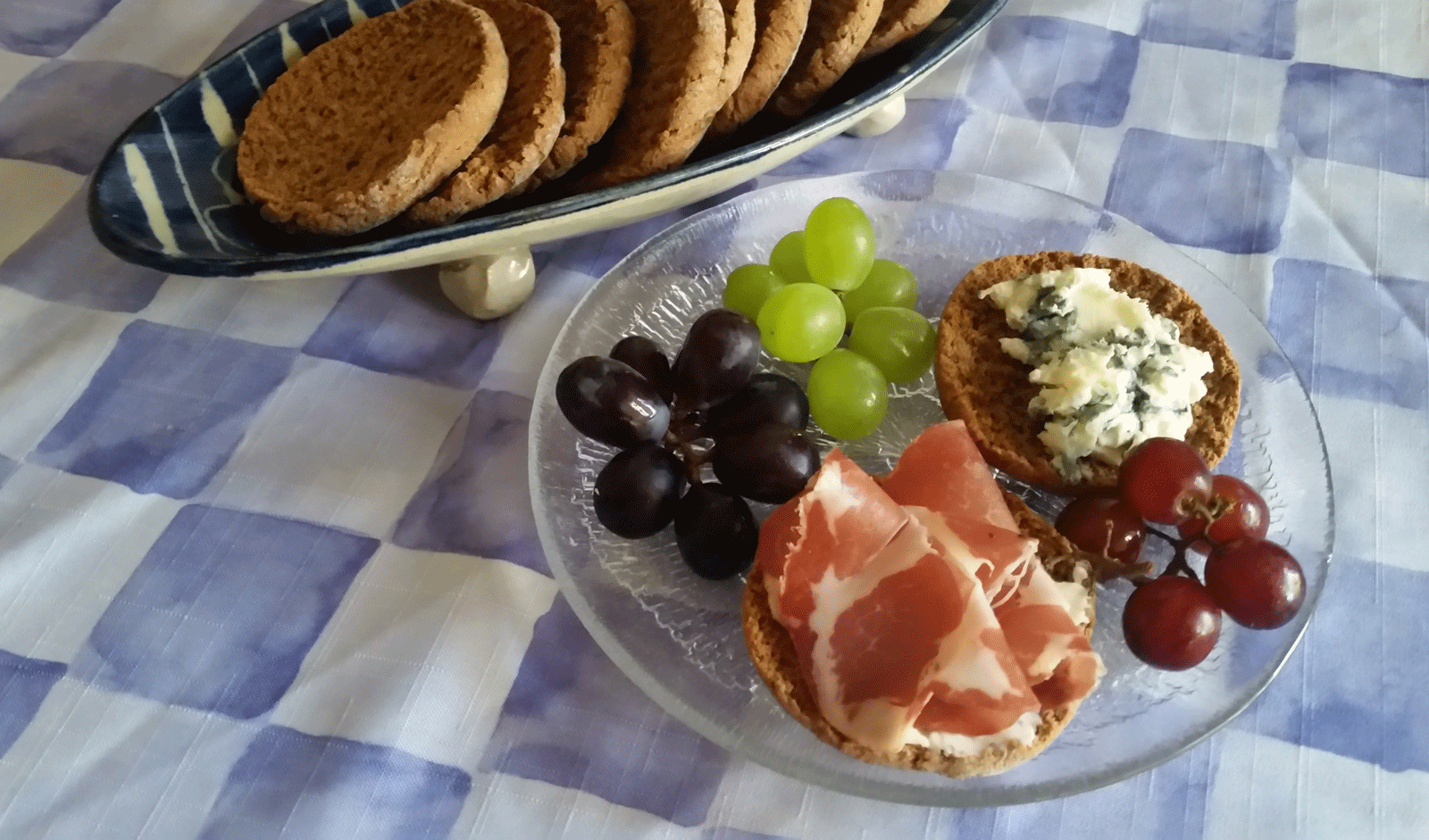
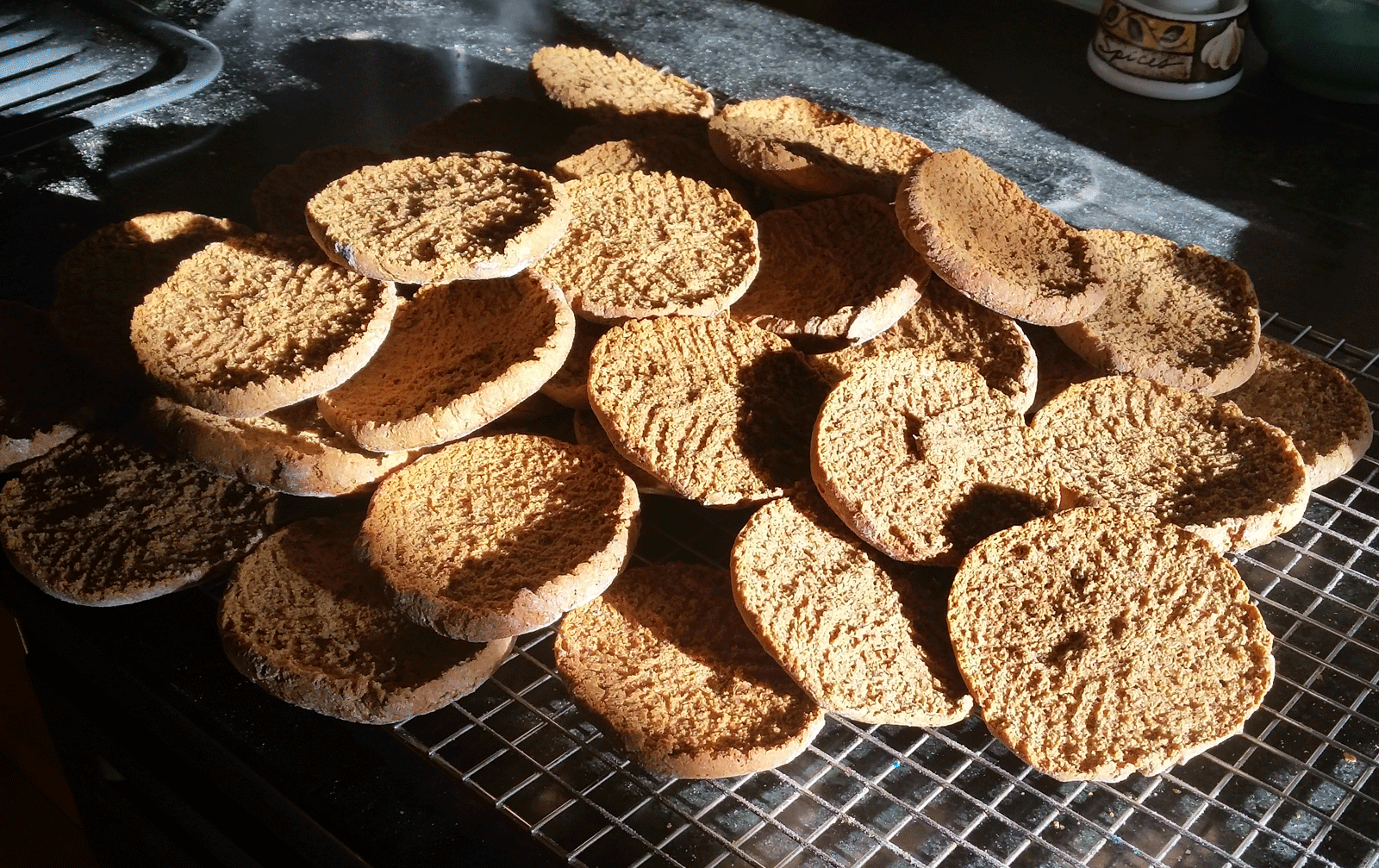
MaryJo
February 18, 2017These look and sound delicious. What are they like if you don’t split and dry them? My thought is that they would be wonderful either way!
Dave Nielsen
February 18, 2017These look really good. How does “wholegrain” rye flour compare to the rye categories in “The Rye Baker”? Is it white, medium or dark rye?
Stanley Ginsberg
February 19, 2017Wholegrain rye has a slightly higher ash content — 1.80% or so to 1.4% for medium rye. You can substitute medium rye without affecting the outcome, or, if you can’t get wholegrain, substitute 20% of the medium rye with dark rye for a close approximation.
Susan San Martin
February 19, 2017I made these this morning and the flavor and texture are out of this world. Being a direct rise dough with no sourdough component means that the turnaround to make them was quick. They are absolutely delicious, with a crunchy yet yielding texture that is out of this world. I had great intentions of breaking out the Basque cheeses as an accompaniment, but they were so good that we nibbled them plain! Thank you for presenting this rye treasure! I will make them again and quit buying expensive sawdust-flavored rye crackers!
Stanley Ginsberg
February 19, 2017It’s experiences and feedback like this that make my efforts worthwhile. Thanks so much for sharing!
Karin Anderson
February 19, 2017Interesting, I tried my hand so far only in Freerk’s (BreadLab) Dutch rusks. I grew up with Zwieback, of course. I’m eager to try this rye version.
Susan San Martin
February 22, 2017I baked these on 2/19 and stored the cooled rusks in an airtight container. This morning we had them for breakfast — super fast as this is essentially pre-toasted toast! — and the texture was still yielding, but the crunchiness had declined slightly. Conclusion: three-day-old rusks would benefit from a brief pass through the toaster! My teenager who usually sniffs at wholegrains loved these and now breakfast is solved. I can also imagine that this waybread would be a nice treat to mail to a starving college student who is held hostage by dorm food.
Carl
February 22, 2017Very nice. Thank you for the recipe! My dough was a little wetter than I expected so I probably measured something incorrectly but this was quickly fixed by adding more flour.
I split the small dough balls in half, flattened them, and then stacked them two high before baking. This made splitting them easier. (This stacking trick was suggested by several 19th century cookbooks.)
Delicious!! Thanks again!
Gaye
February 18, 2019Hi just baked these. Lovely flavour but too hard for me to bite into. I need to break off a little and allow it to soften in my mouth first. I am wondering if I dried them too much. Thought they needed to be completely dry so that they would keep well.
Stanley Ginsberg
February 18, 2019They need to be fully dried. If you’re having trouble chewing, perhaps you ought to make them a bit thinner next time.